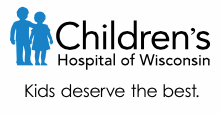COntinuous vs BOlus Nasogastric Feeding in Mechanically Ventilated Pediatric Patients 2
| Status: | Recruiting |
|---|---|
| Healthy: | No |
| Age Range: | Any - 12 |
| Updated: | 1/24/2018 |
| Start Date: | November 2015 |
| End Date: | December 2018 |
| Contact: | Jennifer Pitz, MPA, CRA |
| Email: | jpitz@chmca.org |
| Phone: | 330-543-8272 |
This multi-center, prospective, randomized comparative effectiveness intervention study will
evaluate continuous feeding (CGF) and bolus gastric feeding (BGF) protocols and their effect
on delivery of prescribed nutrition and feeding intolerance in mechanically ventilated
critically ill children for up through 12 hours post achievement goal feeds or exclusion from
feeding protocol, whichever comes first, to a maximum of 10 days.
evaluate continuous feeding (CGF) and bolus gastric feeding (BGF) protocols and their effect
on delivery of prescribed nutrition and feeding intolerance in mechanically ventilated
critically ill children for up through 12 hours post achievement goal feeds or exclusion from
feeding protocol, whichever comes first, to a maximum of 10 days.
A significant number of children (>30%) are malnourished upon admission to the Pediatric
Intensive Care Unit (PICU). In addition, critically ill children are at risk to develop new
or worsened malnutrition during their PICU stay. Adequate nutritional support of critically
ill children reduces mortality and morbidities, such as hospital acquired health care
infections. Inadequate nutrition during hospitalization results in poor healing, increased
risk for hospital acquired conditions, and prolonged length of stay, all of which contribute
to increased health care costs. Even previously healthy children experiencing critical
illness are at high risk for malnourishment because of increased protein and/or caloric needs
at a time when oral intake is inadequate to meet their metabolic needs. A gap in the
literature exists regarding the effectiveness of 2 delivery modes for gastric enteral
nutrition: continuous gastric (stomach) feeding (CGF), the steady infusion of liquid
nutrition is delivered at an hourly volume via an infusion pump, and bolus gastric feeding
(BGF), whereby nutrition is intermittently delivered over a prescribed period of time,
followed by a period of rest.
Enteral nutrition (EN, or tube feeding) in the PICU is commonly given via continuous gastric
feeding. However, feeding by bolus or intermittent methods better mimics normal body function
and may minimize interruptions to feedings improving nutritional intake. This study proposes
to address the gap in the literature regarding the best method to deliver EN to achieve
prescribed nutritional goals and avoid feeding interruptions in the mechanically ventilated,
critically ill pediatric population.
This multi-center, prospective, randomized, controlled study includes children 1-month to
12-years who are on a ventilator and have EN started within 48-hours of admission. Subjects
are randomized to CGF or BGF. Feeding volume is advanced in a weight-based manner every
3-hours to target volume; caloric density is then increased to goal. Feeding intolerance
measures are assessed every 3-hours. Study sites are assigned to follow one of two feeding
intolerance criteria to better define the measures and thresholds necessary to halt and
resume feeds for safety purposes. Incidence, duration and category of feeding interruptions
are recorded. Statistical significance is defined as p < 0.05. The findings will be submitted
for oral and poster presentation and manuscripts submitted for publication.
As the focus of nursing remains not on disease and cure, rather on healing and health,
nutrition is embedded in this philosophy. Our vision of nursing is to put the patient in the
best position to heal him or herself. Mitigating existing malnutrition and/or avoiding newly
acquired nutritional deficits decreases the risk of mortality and hospital acquired adverse
events in this population. This study seeks to optimize delivery of nutrition as therapy as
imperative to optimize clinical and functional outcomes in the critically ill child.
Intensive Care Unit (PICU). In addition, critically ill children are at risk to develop new
or worsened malnutrition during their PICU stay. Adequate nutritional support of critically
ill children reduces mortality and morbidities, such as hospital acquired health care
infections. Inadequate nutrition during hospitalization results in poor healing, increased
risk for hospital acquired conditions, and prolonged length of stay, all of which contribute
to increased health care costs. Even previously healthy children experiencing critical
illness are at high risk for malnourishment because of increased protein and/or caloric needs
at a time when oral intake is inadequate to meet their metabolic needs. A gap in the
literature exists regarding the effectiveness of 2 delivery modes for gastric enteral
nutrition: continuous gastric (stomach) feeding (CGF), the steady infusion of liquid
nutrition is delivered at an hourly volume via an infusion pump, and bolus gastric feeding
(BGF), whereby nutrition is intermittently delivered over a prescribed period of time,
followed by a period of rest.
Enteral nutrition (EN, or tube feeding) in the PICU is commonly given via continuous gastric
feeding. However, feeding by bolus or intermittent methods better mimics normal body function
and may minimize interruptions to feedings improving nutritional intake. This study proposes
to address the gap in the literature regarding the best method to deliver EN to achieve
prescribed nutritional goals and avoid feeding interruptions in the mechanically ventilated,
critically ill pediatric population.
This multi-center, prospective, randomized, controlled study includes children 1-month to
12-years who are on a ventilator and have EN started within 48-hours of admission. Subjects
are randomized to CGF or BGF. Feeding volume is advanced in a weight-based manner every
3-hours to target volume; caloric density is then increased to goal. Feeding intolerance
measures are assessed every 3-hours. Study sites are assigned to follow one of two feeding
intolerance criteria to better define the measures and thresholds necessary to halt and
resume feeds for safety purposes. Incidence, duration and category of feeding interruptions
are recorded. Statistical significance is defined as p < 0.05. The findings will be submitted
for oral and poster presentation and manuscripts submitted for publication.
As the focus of nursing remains not on disease and cure, rather on healing and health,
nutrition is embedded in this philosophy. Our vision of nursing is to put the patient in the
best position to heal him or herself. Mitigating existing malnutrition and/or avoiding newly
acquired nutritional deficits decreases the risk of mortality and hospital acquired adverse
events in this population. This study seeks to optimize delivery of nutrition as therapy as
imperative to optimize clinical and functional outcomes in the critically ill child.
Inclusion Criteria:
- all medical patients hospitalized in the Pediatric Intensive Care Unit (PICU)
- aged 1 month through 12 years of age
- mechanically ventilated within the first 24 hours of admission
- patients with an anticipated duration of mechanical ventilation greater than 48 hours
Exclusion Criteria:
- diagnosis of acute or chronic gastrointestinal pathology
- primary cardiac surgery or other surgical service patients
- enteral nutrition initiated greater than 48 hours post PICU admission, or
- enteral nutrition was initiated prior to admission to PICU
We found this trial at
6
sites
Oklahoma City, Oklahoma 73104
Phone: 405-271-5211
Click here to add this to my saved trials
South 34th Street
Philadelphia, Pennsylvania 19104
Philadelphia, Pennsylvania 19104
215-590-1000

Principal Investigator: Sharon Irving, PhD, ARNP
Children's Hospital of Philadelphia Since its start in 1855 as the nation's first hospital devoted...
Click here to add this to my saved trials
Click here to add this to my saved trials
1600 Southwest Archer Road
Gainesville, Florida 32608
Gainesville, Florida 32608
Principal Investigator: Charlene Leonard, MSN, CNP
Click here to add this to my saved trials
1 Medical Center Dr
Lebanon, New Hampshire 03756
Lebanon, New Hampshire 03756
(603) 650-5000

Principal Investigator: Marcy N Singleton, ARNP
Dartmouth Hitchcock Medical Center Dartmouth-Hitchcock is a national leader in patient-centered health care and building...
Click here to add this to my saved trials
9000 W Wisconsin Ave #270
Milwaukee, Wisconsin 53226
Milwaukee, Wisconsin 53226
(414) 266-2000

Principal Investigator: Theresa Mikhailov, MD, PhD
Children's Hospital of Wisconsin Nothing matters more than our children. At Children's Hospital of Wisconsin,...
Click here to add this to my saved trials